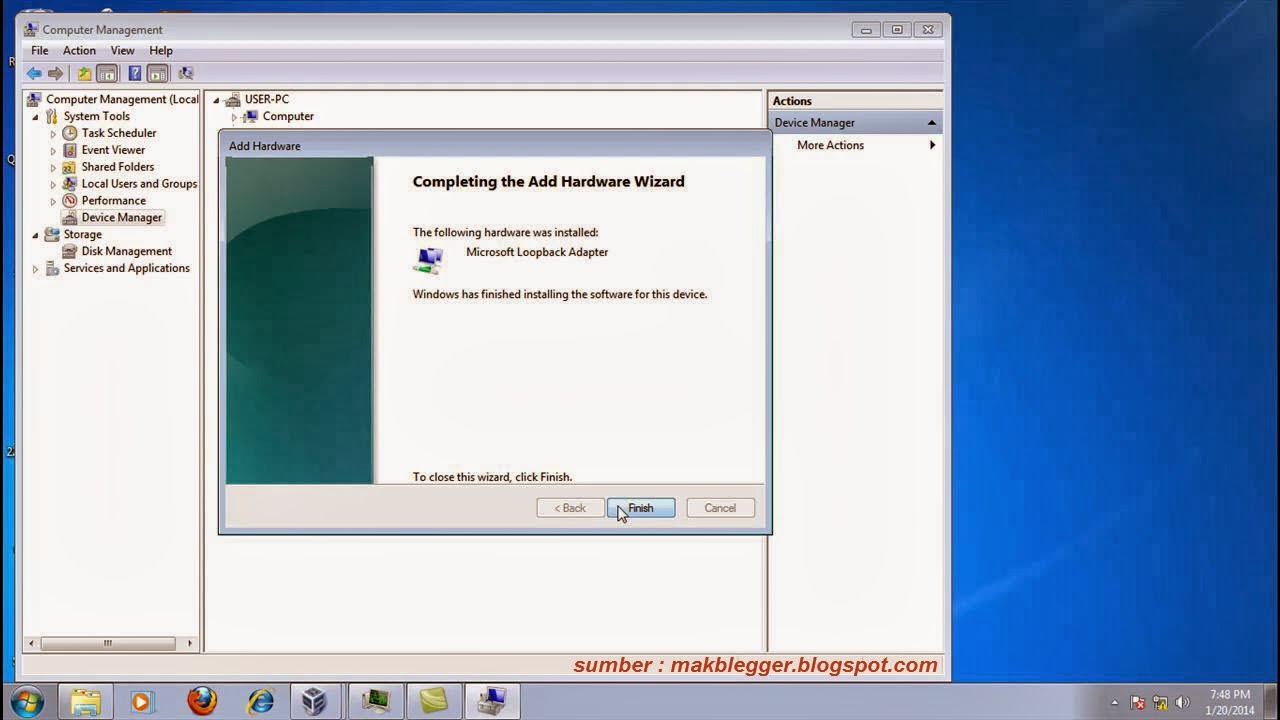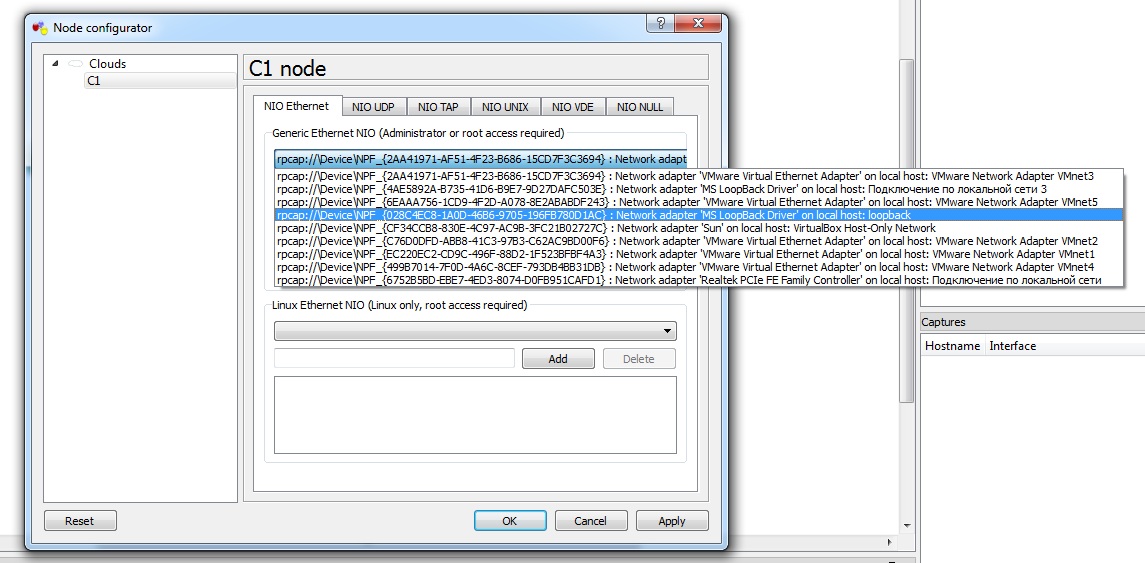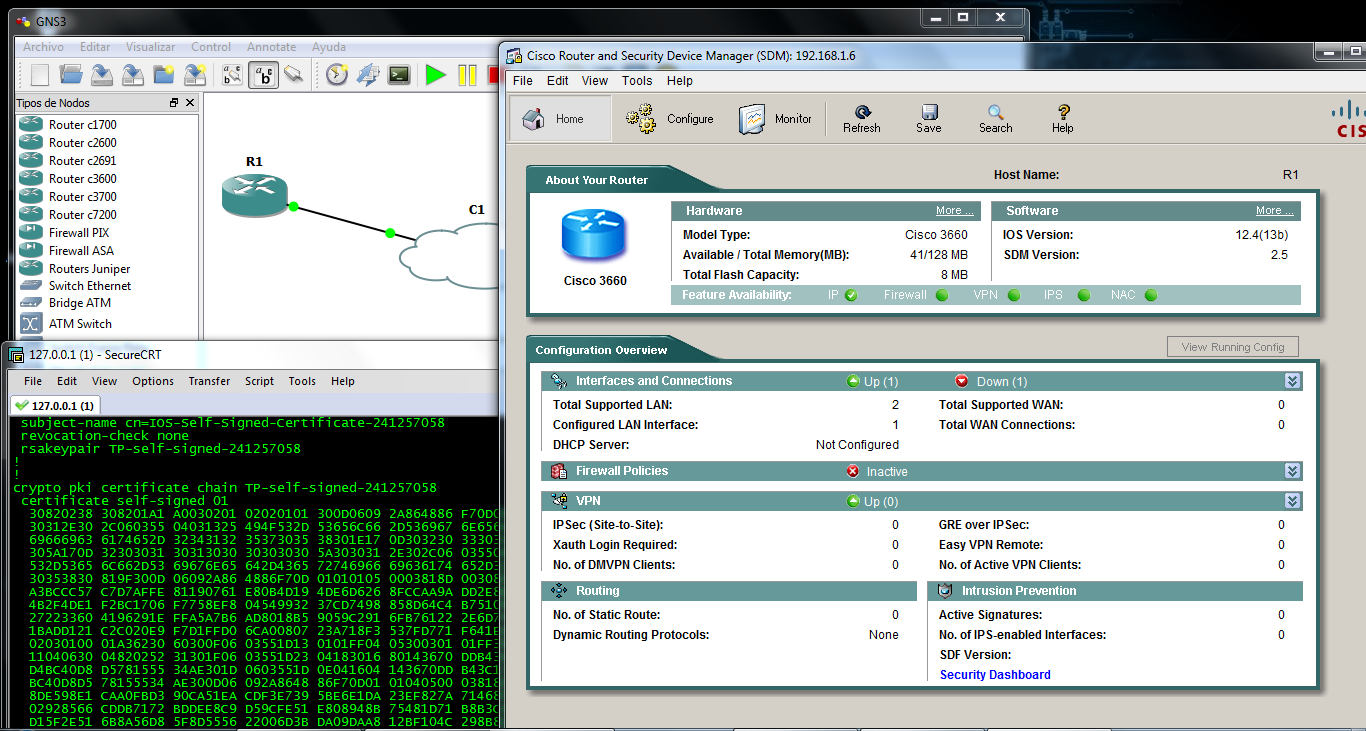
- #Microsoft loopback adapter gns3 how to#
- #Microsoft loopback adapter gns3 install#
- #Microsoft loopback adapter gns3 software#
- #Microsoft loopback adapter gns3 windows 8.1#
Without the always keyword, R1 will only advertise a default route if it already has a default route in its routing table, but adding the keyword means that R1 will advertise a default route, even if it does not have a default route in its routing table. 2.Create Cloud connected to MSLoopback interface. So here are the steps: 1.Create MSLoopback interface.
#Microsoft loopback adapter gns3 windows 8.1#
You could make sure that R1 always advertises a default route: router ospf 1ĭefault-information originate always ! add the always keyword My topology will looks like this: Windows7 - The PC where the GNS3 installed and running. Following are basic instructions to get started on creating RouterOS Virtual Labs using GNS3 (Graphical Network Simulator) tool on Windows desktop machine, Windows 8.1 to be specific but it should be similar on other Windows versions as well, just make sure it is 64bit version. You could add a default route to the R1 routing table: ip route 0.0.0.0 0.0.0.0 Loopback0 202.78.10.10 You can add the R1 Loopback address to the R1 OSPF: router ospf 1
#Microsoft loopback adapter gns3 how to#
That means R3 has no idea how to reach the R1 Loopbak0 address, so it drops packets destined to that address. Your R1 Loopback0 interface has this address: ip address 202.78.10.10 255.255.255.255īut you are not advertising that address in the R1 OSPF: router ospf 1 Ip nat inside source list 1 interface GigabitEthernet5/0 overloadĪccess-list 1 permit 192.168.50.0 0.0.0.31

order of business was to create a loopback interface, to telnet to: interface Loopback0. Mgcp behavior comedia-check-media-src disable Step 3 Connect the DB-25 end of the modem adapter to the modem.

Username - secret 5 $1$D/vk$a8XNtzs/Cir2tVb/H7Lxv0 R1 configuration are shown below hostname R1 Note:- You can connect this cloud to Router, ASA etc, But it is recommended to put Ethernet Switch between device and cloud instead of directly connecting device to Cloud.I'm unable to ping R1 loopback interface (destination host unreachable) Iii) Inside the “Ethernet” tab select your loopback interface and add like below Ii) Right click on cloud select “Configure”
#Microsoft loopback adapter gns3 install#
Then install the adapter, it may take some time to complete.Ĥ) Assign IP address to Loopback interface Select “ Install the hardware that I manually select from the a list”Ĭhoose Manufacture as Microsoft and select “ Microsoft KM-TEST Loopback Adapter”

I tried to see if the WinPcap compatibility troubleshooter helps. Right click on “Computer ” then select “ Add legacy hardware” ASA(inside)>ethernet switch>Cloud(loopback adapter) ASA(inside) - 10.10.10.1/24 Loopback Adapter - 10.10.10.2/24 But I am still not able to ping from ASA (inside) to Loopback Adapter or vice-versa. 1) Open “Device Manager”Ĭomputer –> system properties –> Device manager 2) Add legacy hardware At the end I have provided solutions for common issues which I faced connecting GNS3 to loopback interface. So I thought to make a quick guidance for those who struggle with connecting GNS3 to loopback interface.

Specially installing ASDM, you definitely need to create MS loopback interface. Note: Ensure you note down the IP address that is assigned to your loopback adapter as you will need it to configure your router interface connecting to the cloud. GNS3 enables you to run a Cisco IOS in a virtual environment and serves as a graphical user interface to Dynamics.
#Microsoft loopback adapter gns3 software#
While working on GNS3, it may require to connect physical interface of machine to activate more advance features. Select the network adapter you wish to share your internet with (Microsoft Loopback Adapter) and Check both boxes as shown in the figure above and click ok. GNS3 is an open-source software that helps in emulating networks using the Cisco Internetwork Operating Systems (IOS).


 0 kommentar(er)
0 kommentar(er)
